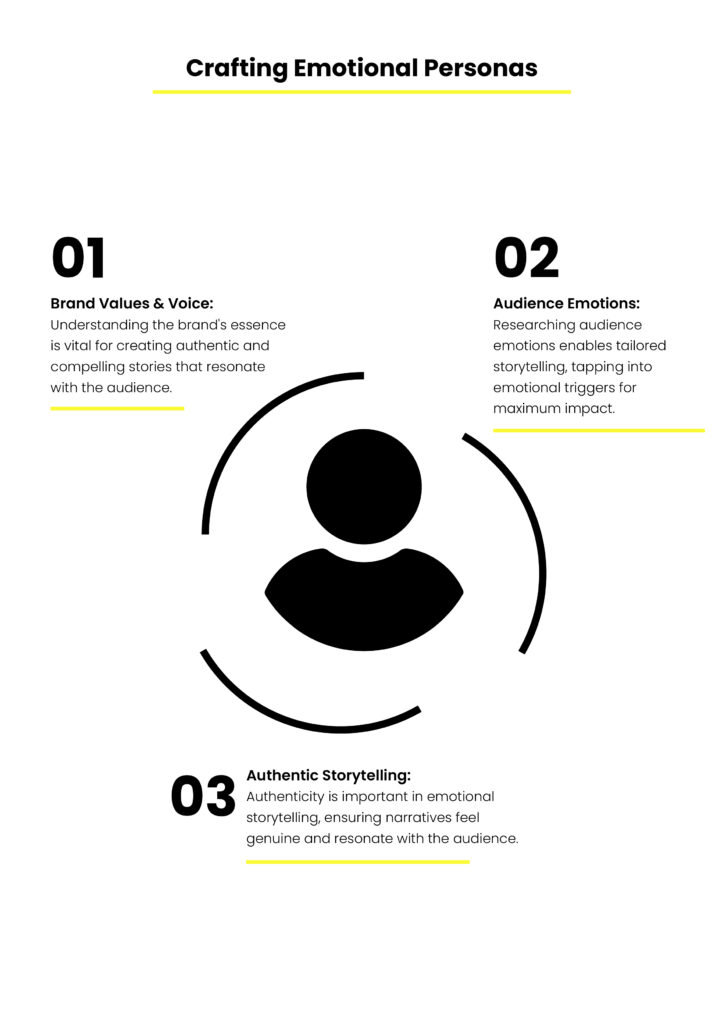Captivating your audience through authentic storytelling is no longer a side hustle but a mandatory convention for foretelling marketers. So, what makes your brand unique amongst the sea of value-added propositions? This is where behavioural and psychographic sentiment interludes its segment where emotion in brand storytelling is poised for perfection.
Creating compelling product stories hinges on how impactful your brand ambassadors have succeeded in incorporating an audience base which drives true value into the ethos of your brand. Consumers now seek loyalty factors far beyond the end of their purchase journey which compel them to increase positive word of mouth, referrals, subsidiary campaigns and incentivised programmes and product lines that create the essence of brand storytelling itself.
In this blog, we will explore the facets of brand storytelling in digital marketing as of 2024, embodying the power of emotion in attracting audience fandom and driving profitability for your business.
Understanding Emotional Storytelling
Emotional storytelling is the art of crafting narratives that evoke specific emotional responses from the audience. It goes beyond product features or benefits, tapping into the underlying emotions driving consumer behaviour. By connecting with consumers emotionally, brands can create memorable experiences that resonate long after the initial interaction.
Types of Emotional Appeals
Emotional appeals go by many moods and it’s the job of a marketer to decipher behavioural intent for digital marketing campaign initiatives. Emotional appeals are often volatile and ever-changing, positioning businesses on a receptive pedestal.
- Happiness and Joy: Brands often use themes of happiness and joy to evoke positive emotions in their audience, associating their products or services with feelings of contentment and satisfaction.
- Fear and Urgency: Fear-based appeals leverage emotions like anxiety and urgency to prompt immediate action, often highlighting potential risks or consequences of inaction.
- Sadness and Empathy: Stories that evoke sadness or empathy can create a deep emotional connection with the audience, eliciting feelings of compassion and understanding.
- Surprise and Curiosity: Unexpected or intriguing narratives that spark curiosity can captivate audiences, encouraging them to engage further with the brand.
- Anger and Indignation: While less common, appeals to anger or indignation can incite action by tapping into feelings of injustice or frustration.
The Science Behind Emotional Engagement
Emotions have a profound impact on consumer decision-making, influencing everything from brand perception to purchase behaviour. Neurological studies have shown that emotions drive attention, memory, and decision-making processes in the brain. When brands evoke strong emotions through storytelling, they create lasting impressions that shape consumer attitudes and behaviours.
Implementing Emotional Storytelling

Crafting out emotional personas involves a holistic approach to understanding, iterating and operating your digital campaigns with audience analysis at bay.
- Identifying Brand Values and Voice: Understanding the core values and personality of the brand is essential for crafting authentic and compelling stories that resonate with the target audience.
- Understanding Target Audience Emotions: Conducting audience research to identify the emotional triggers and motivations of your target demographic helps tailor storytelling efforts for maximum impact.
- Crafting Authentic and Relatable Stories: Authenticity is key to emotional storytelling. Brands must strive to create narratives that feel genuine and resonate with the lived experiences of their audience.
Examples of Emotional Storytelling
One compelling case study in emotional storytelling comes from Nike’s “You Can’t Stop Us” campaign. Through a powerful video montage, Nike seamlessly intertwined footage of various athletes overcoming obstacles, injuries, and setbacks with a split-screen technique, showcasing the parallels between their movements. This emotionally charged narrative resonated deeply with viewers, inspiring feelings of determination, resilience, and unity, while effectively reinforcing Nike’s brand message of empowerment and perseverance.
Coca-Cola’s “Open To Better” campaign uplifted consumers during challenging times with heartwarming commercials and social media content, promoting optimism, kindness, and connection. By tapping into universal emotions of hope and positivity, Coca-Cola reinforced its brand values and fostered emotional connections with its audience.
Measuring Emotional Impact
Emotional metrics are undeniably quantifiable, with emergent KPIs and analytics transforming the storyline library for the upcoming innovations in optimising digital marketing campaigns.
- Metrics for Emotional Engagement: While emotional impact can be challenging to quantify, metrics such as sentiment analysis, engagement rates, and brand sentiment can provide insights into the effectiveness of emotional storytelling efforts.
- Tools and Techniques for Analysis: Advanced analytics tools and sentiment analysis software can help marketers track and measure the emotional resonance of their campaigns, allowing for data-driven optimisation and refinement.
The Future of Emotional Storytelling
As technology continues to evolve, the future of emotional storytelling holds endless possibilities. From immersive experiences powered by virtual reality to personalised narratives driven by artificial intelligence, the landscape of emotional marketing is poised for continued innovation and growth.
- Advent of Al Algorithms for Brand Mention
AI algorithms analyze extensive datasets to understand individual preferences, behaviours, and emotions, providing insights into consumer psychology for personalised marketing.
- Personalised Advertisements
Personalised ads have been introduced based on interests, demographics, and browsing history, leading to higher engagement and conversion rates. Ads are distributed across diverse channels via AI platforms.
- Interactive Chatbots
AI chatbots use NLP and machine learning for real-time conversations, answering queries and providing personalised assistance. Mimicking human interactions, they boost customer engagement and satisfaction.
- Dynamic Content Generation
AI algorithms create real-time dynamic content based on user preferences. This content includes personalised recommendations, email newsletters, and website experiences.
Conclusion
Emotional storytelling remains a potent tool for brands seeking to forge meaningful connections with their audience in the digital age. By understanding the psychology of emotion, implementing authentic storytelling strategies, and leveraging data-driven insights, brands can create compelling narratives that resonate deeply and drive lasting impact. As we look to the future, embracing emotion in digital marketing will be essential for brands aiming to stand out in a crowded marketplace and foster genuine relationships with their customers.